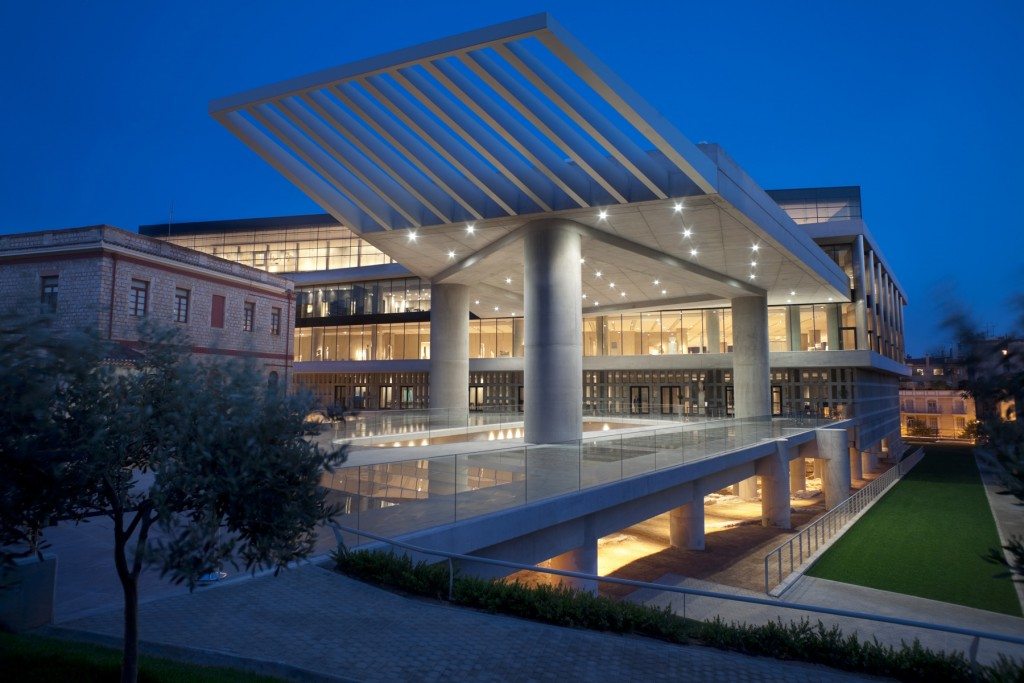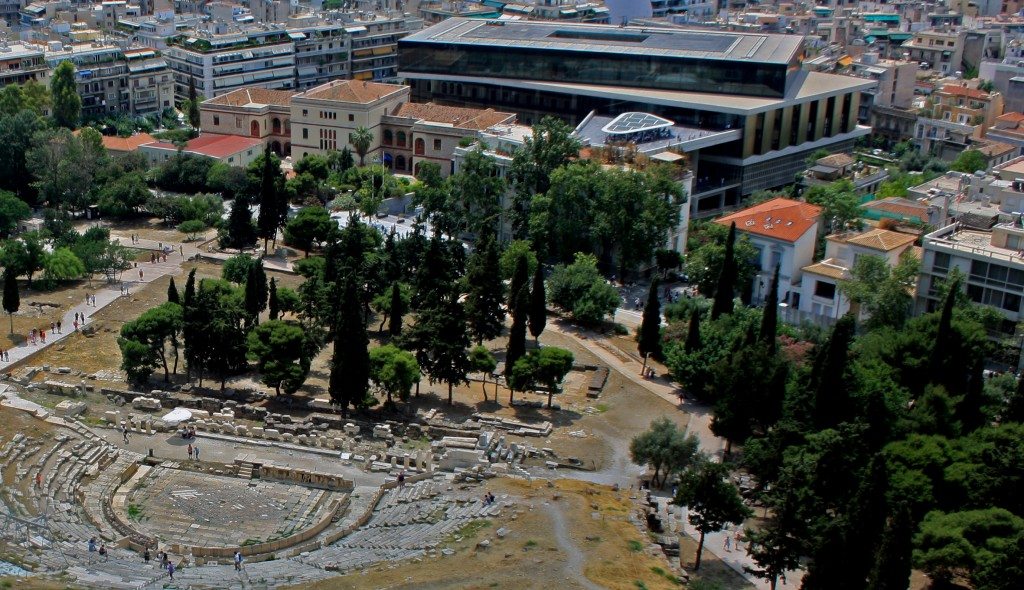The New Acropolis Museum in Athens opened its doors to the public on June 20th 2009. Since then, millions of visitors have flocked to its airy halls. It was decided that a new museum was needed to replace the old nineteenth-century museum building (situated on the Acropolis) in order to house the ever increasing amount of archaeological material and to act as a fit and proper house for the marble sculptures of the Parthenon. We are so used to seeing old artefacts housed in old buildings, drowned in artificial light, but this museum, with its vast glass walls and lofty atmosphere, brings a true feeling of vitality to what it holds. It is because of this that the New Acropolis Museum is easily in my ‘Top 5 Museums’ list; how could it not be when the museum building itself is part of the attraction?
One of the things that strikes me on each visit to this museum is just how much you can see in every single direction. On the first floor, you can look down and see the ruins of the archaeological site upon which the museum was built. If you look to your sides you will see ceiling-high displays of some of the finest Greek pottery. “Mind your back!” You nearly walked straight into a votive dedication to Asclepius, which thanks the god for healing an ancient Athenian’s ear, foot, and eye ailments (with the affected parts carved into the marble). In stooping down to look at some low-level displays you stand up and find yourself at the feet two Nikai statues, and if you look up, you see the ‘Bluebeard pediment’ looming where the first floor ramp meets the second floor. If you are looking for ancient Greek art and artefacts, you have certainly come to the right place! The entire first floor of the museum is this long gradual ramp, and it displays artefacts that were found on the slopes of the Acropolis (video displays, a shop and a cloakroom fill the rest of the floor).

Two Nikai, the ‘Bluebeard Pediment’ is in the background.

The ‘Bluebeard Pediment’.
Second Floor
The second floor greets you with one of the most spectacular examples of Archaic art, the ‘Bluebeard Pediment.’ This vast mythological scene is the West Pediment of the archaic Hecatompedon (build around 575-550 BCE), a limestone ‘hundred-footer’ temple which stood in the same position as the Classical Parthenon. It depicts at right Heracles defeating Triton, and at left a hideous three-headed snake-tailed monster (possibly Typhon or Nereus). It is from the beards of this monster, painted blue, that the pediment gets its affectionate name. The central scene depicts two lions slaughtering a bull. The vivid polychromy of the sculpture is most impressive. Even today you can see with clarity that the lions’ claws dig into the bull and draw blood. A deep red runs down the victim’s flank.
This museum makes sure that its visitors know that Greek statuary was painted. One of the best examples is the Peplos Kore (named for her colourfully decorated robe ‘peplos’). The museum has even created an online game where viewers can paint the statue as they imagine it might have been painted 2500 years ago, using some of the colours that would have been available in Athens (click here). In fact, visitors can see examples of painters’ tools and the pigments that they would have used, as well as explanations as to how the painting process worked. This all falls under a display called ‘Archaic Color’s’, which forms part of the museum’s wider research into polychromy.
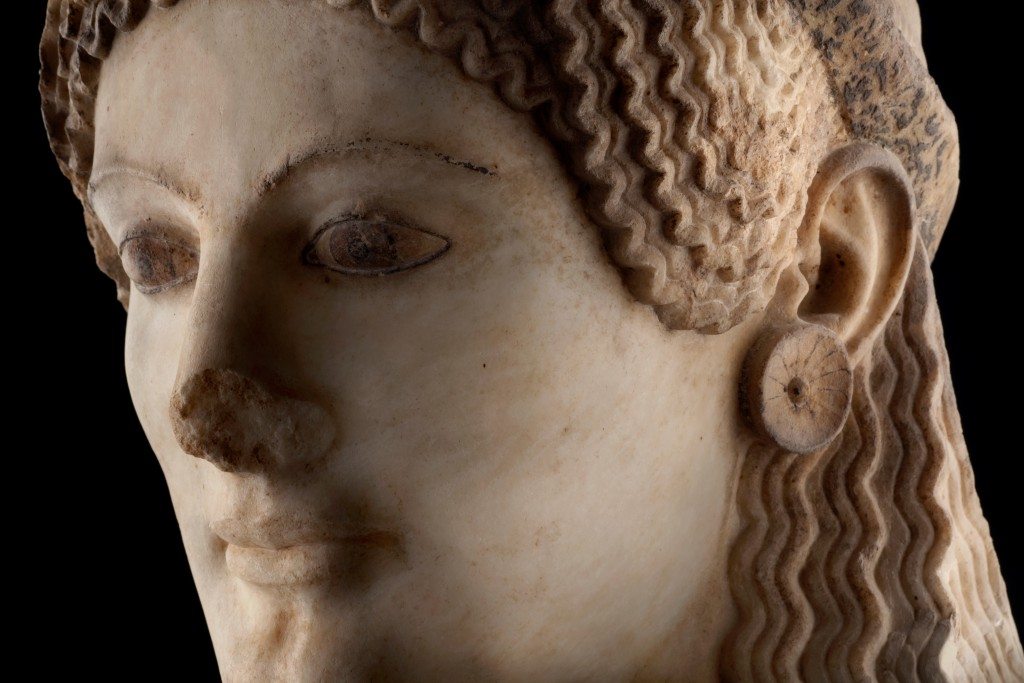
Detail of the Peplos Kore.
Other highlights on this floor include the Rampin Horseman (sadly the head is a plaster cast, since the original is in the Louvre), the Antenor Kore (named after the sculptor), and a vast number of the finest bronze votives and ceramics. Last but not least the five Caryatids from the Erechtheion can be seen on this floor, standing in the positions that they originally held (there is a noticeable gap for the sixth Caryatid, housed in the British Museum).
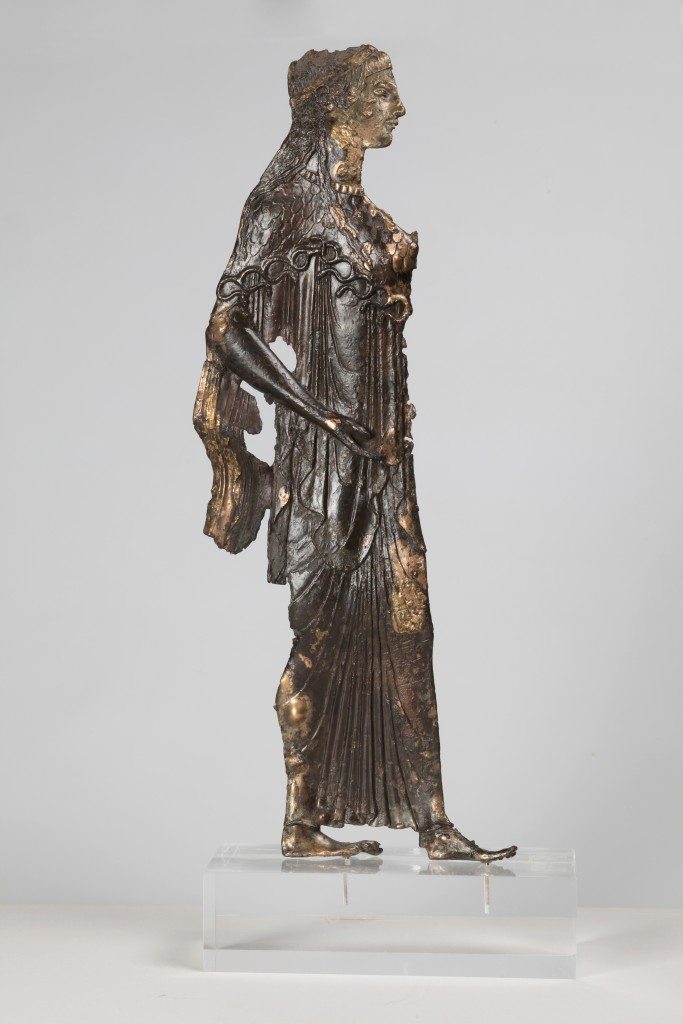
A votive bronze Athena.
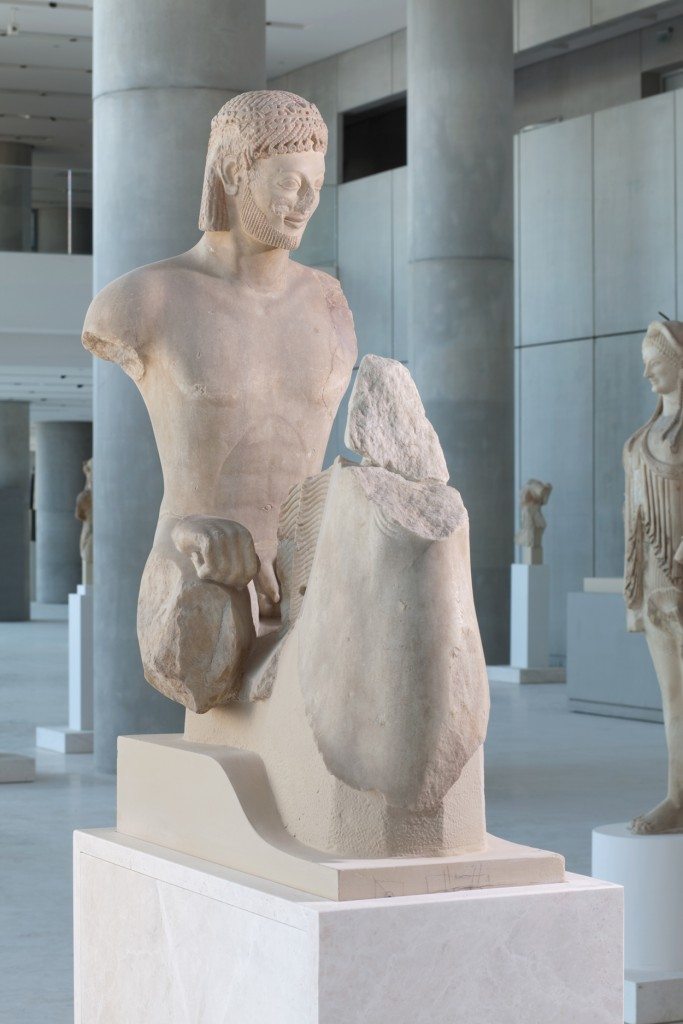
The Rampin Horseman.
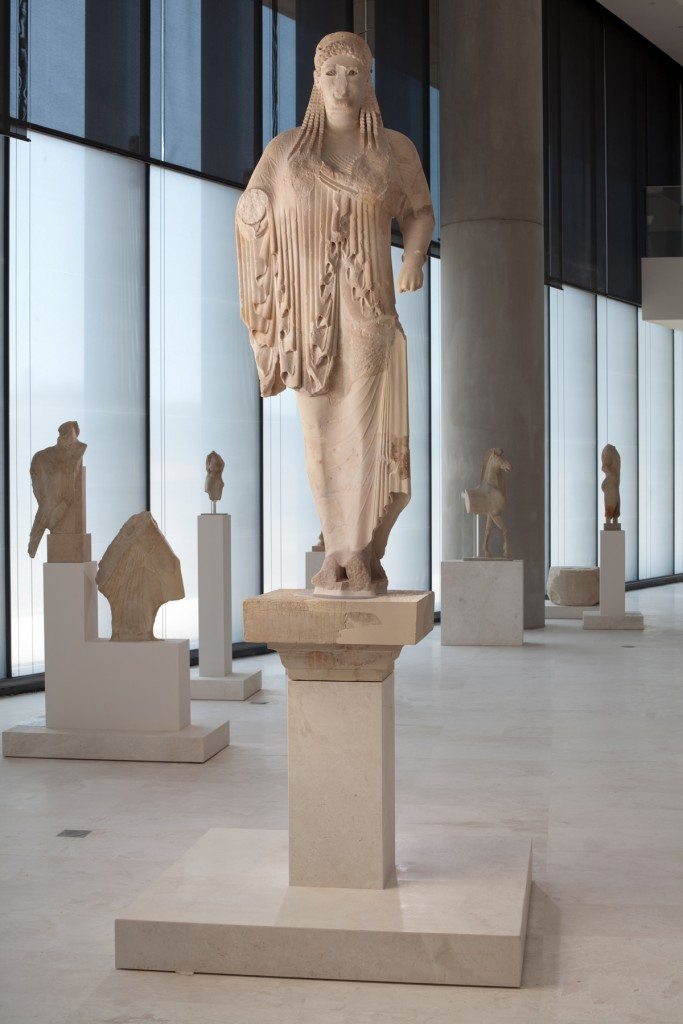
The Antenor Kore.
The Parthenon Marbles
Having viewed the Archaic artefacts on the second floor visitors are advised to proceed to the third floor which is dedicated to the Parthenon, before returning to the second floor and viewing its Roman and late antique artefacts. Indeed, perhaps the pièce de résistance of the entire museum is its third floor; however, this floor is also the one most likely to spark heated debates about where the Parthenon Marbles or the Elgin Marbles should belong.
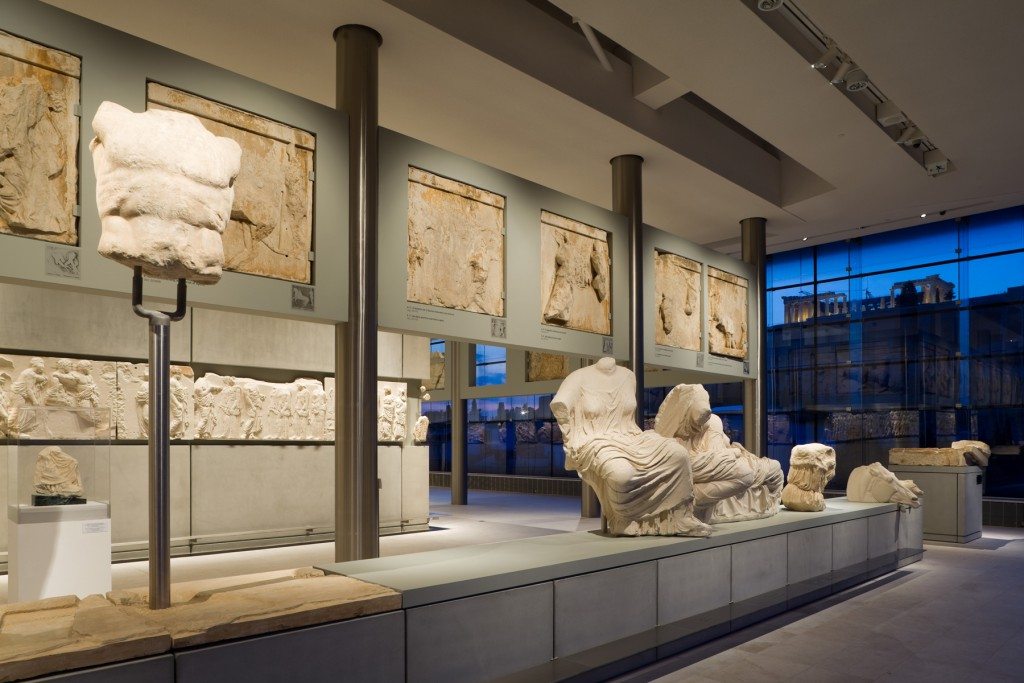
Pediment, Metopes, Frieze, and Temple.
While I won’t get embroiled in that age-old debate, it is undeniable that this is a visually amazing exhibition space. The third floor is orientated differently to the others, lining up with the Parthenon as it sits on the Acropolis. The marble sculptures are displayed as accurately as possible to show how they would have rested on the Parthenon itself. Glass walls allow visitors to gaze, at one moment, on the Parthenon as the midday sun glares down on it, and, at another, to view up close the details of its centuries’ old art.
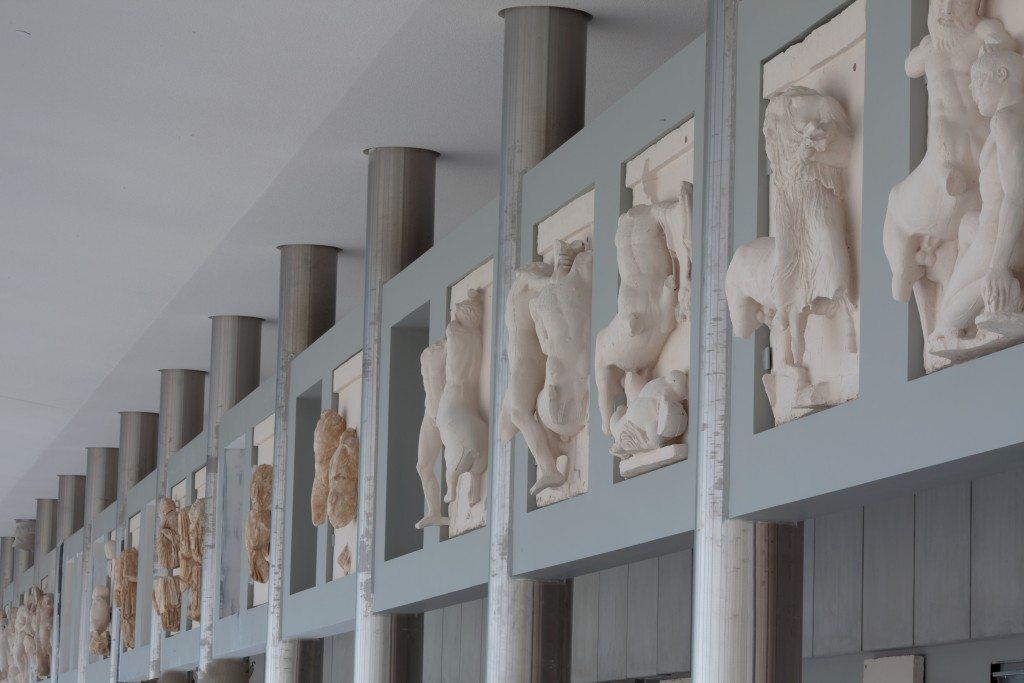
The Metopes and the columns.
Forty-eight columns represent those of the temple, with the metopes suspended in between them. The frieze then runs behind the metopes, also facing outwards. To the East and West the pediments are represented, too. All these features are not as high up as they would have been, in order to be best observed. You can weave in and out of these columns, and in doing so note that the museum points out every single part of the frieze which is housed in another museum or has been lost, either leaving a blank space for it, or including a plaster cast.

The outward facing Frieze.
If you want to learn more about the Parthenon more generally, a video documentary is shown on repeat in the atrium leading into the display. The museum has also developed a great interactive online guide to the Frieze too, which can also be viewed in English (click here). Also, their Youtube Channel has many visual guides to the marbles, such as this explanation of how one of the Frieze blocks would have been carved.
[embedyt]http://www.youtube.com/watch?v=iJomDrlckz8[/embedyt]
Alexander & More
When you feel that you have soaked in as much of the Parthenon as is possible, you can descend back to the second floor. The museum has many fine examples of Roman sculpture, too; in particular, note the head of Alexander the Great and the head of a Barbarian.
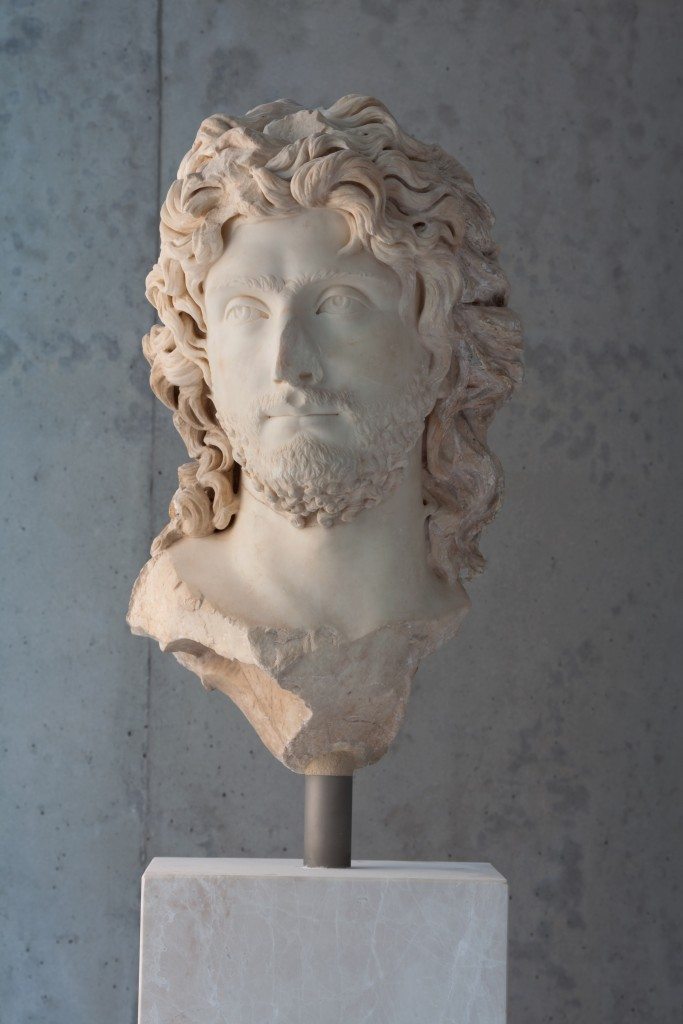
A Barbarian Leader

Alexander the Great.
Most of the other things you would expect in a museum of this size and grandeur can be located on what is in effect floor 2.5. Here you can find the museum gift shop, which now sells a much anticipated English Official Guide: 300 pages with over 300 colour illustrations. This guide is particularly great since photography is only allowed on the third floor, so if you want a visual reminder of the great artworks that you have seen, this is pretty much the only book available (sadly it is not available for online or postal purchase at the moment). This floor also houses the museum café and restaurant (if you are lucky you might be able to get a seat on the outside terrace, which has one of the best views of the Acropolis in Athens).
Entrance to the museum is 5 euros, with free entry to students of Higher Education Institutions, Senior Citizens, and those 18 and under. I know this all too well because I first visited the museum on the day of my 19th Birthday, so while both my friends, being 18, got in for free, I had to pay up (much to their amusement)!
More details about ticketing and opening hours can be found on the New Acropolis Museum website.
The New Acropolis Museum is an absolutely amazing museum, containing some of the finest artworks of the ancient world. You really have to come and see it to experience it. You can stroll through a sea of ancient statues and get face to face with them. And while just hours ago you could have been on the Acropolis standing in the shadow of the Parthenon, you can now get up close to its marble carvings, while being able to look out and view the temple itself. This museum offers an experience like no other! If you are in Athens, you just simply have to visit it.
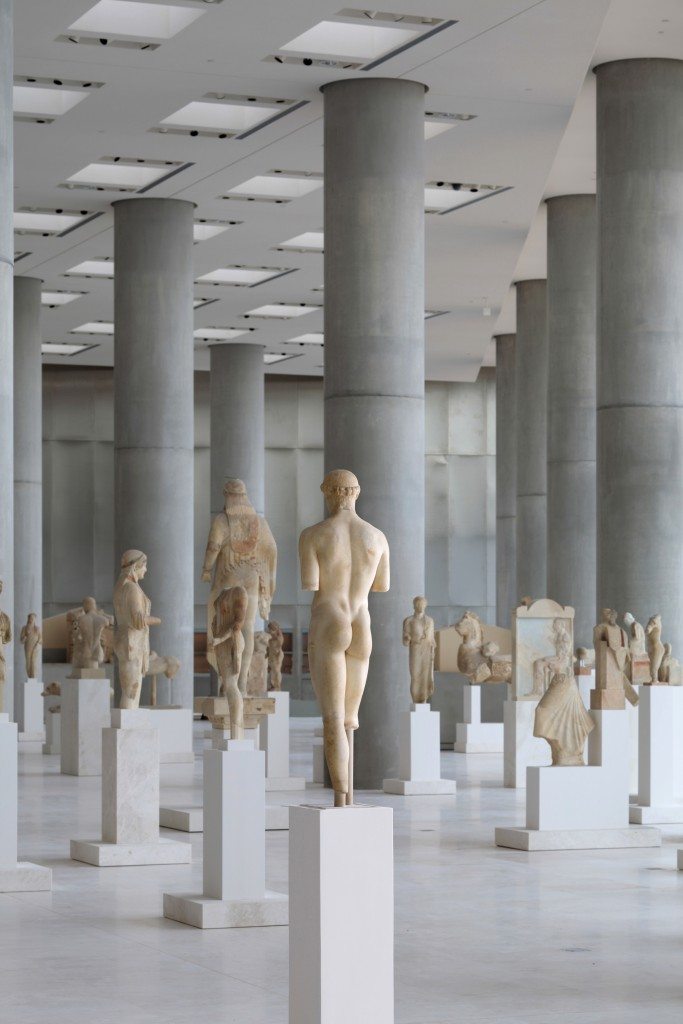
A Sea of Archaic Statues.
Thank you to the New Acropolis Museum Press team for allowing the use of their promotional images. All images are their Press Images, expect the below, which is the author’s own.
